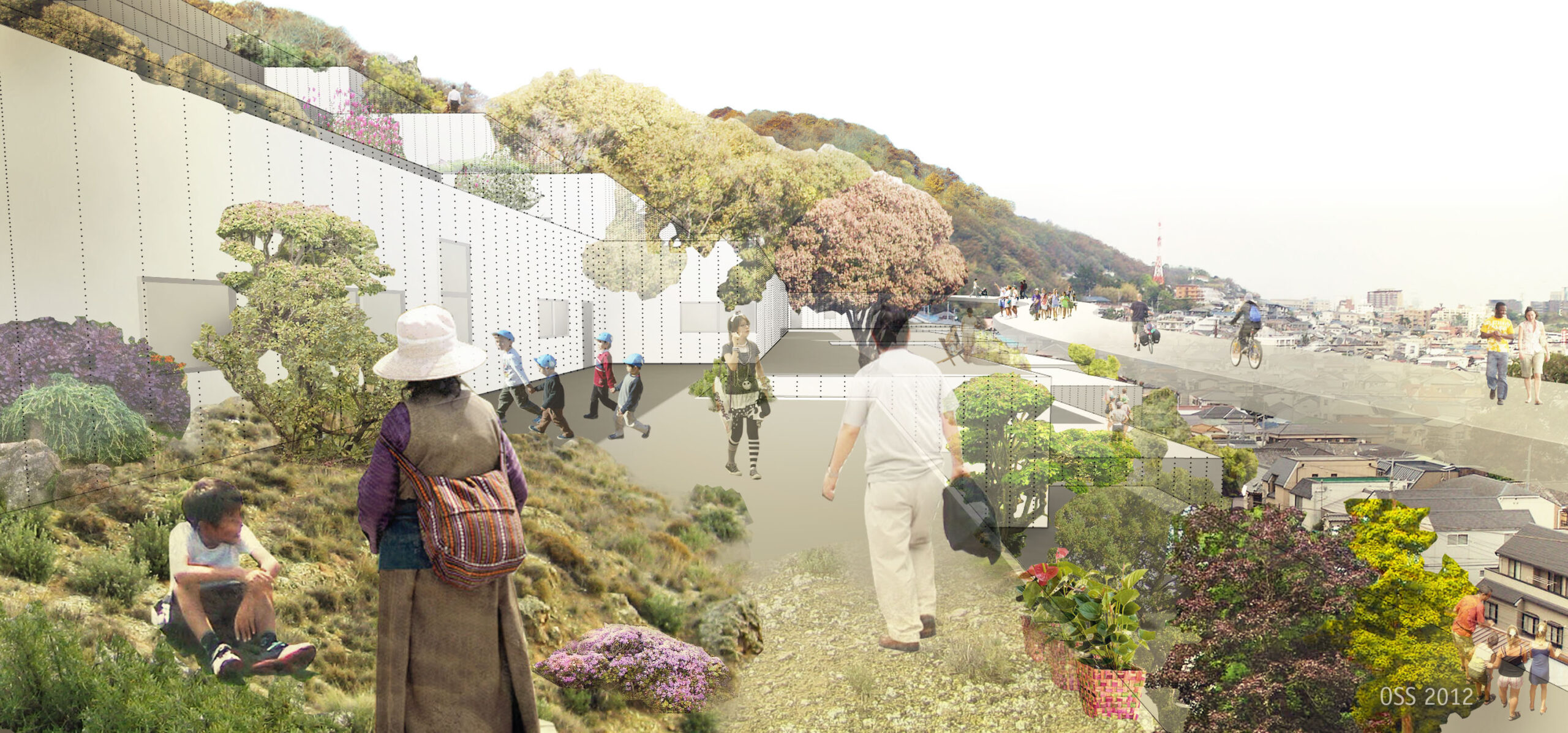What to do against tsunamis?
On March 11, 2011, a level 9 earthquake on the Richter scale, and the tsunami that followed, struck Eastern Japan. Over 18,000 people died or are missing, 394,386 houses were completely or seriously damaged and the urban infrastructure almost disappeared. The magnitude of the disaster made clear that a radically different approach to city planning is necessary in the region.
On Japanese media it is often discussed as a possible solution to future disasters a relocation to higher areas. The idea would imply leaving fisheries, tourist and recreational facilities near the sea, and relocating homes to new developments on hilltops. However, this would hinder a local economy based on local fisheries and activities related to ports, forcing people to commute daily. An added concern involves the potential environmental damage of quarrying hillsides and urbanizing mountains. Also, it would be difficult to concentrate all the population effectively on the sparse high grounds at predominantly flat areas such as, for instance, the Sendai plains.
Others propose to create elevated platforms for housing near the coast, but that threatens to claim a negative side effect, as they would become a barrier for the necessary continuity of public space at ground level.
Our response is to build artificial topographies as an evacuation site, combining them with residential units forming an artificial mountain (or artificial ‘Satoyama’, an ancient Japanese practice of harvesting the climate benefits of hillsides for better housing conditions in towns). These hills protect in their interior the essential public facilities, and an infrastructure of distributed energy. The population of the now washed-up areas will be able to easily evacuate within few minutes of a tsunami alarm onto the artificial hills located at regular intervals.
Our proposal strives to avoid the complete submission of urban, housing and infrastructure designs to fear. The new ‘Satoyama hills’ try to improve urban life and housing and infrastructure design, drawing clues from Japanese traditional best practices. Offering efficient escape in case of tsunami becomes a perfectly integrated by-product.
A prototype and two study-cases
As a study prototype we propose to create communities of around 5,000 people, including one ‘hill’ complex at the centre. The dimensions, specific configuration and program of each artificial hill will be established according to the characteristics of each location. These hills will contain homes for about 1,500 to 2,500 people distributed in one hill complex, and between 2,500 and 3,500 people would live around them, within 15 minutes of walking distance. The surface of the hill is a park that can be used daily and an evacuation site when necessary. The hill’s surface combines private gardens with public routes and greenery, while its interior accommodates commercial and recreational facilities and energy infrastructure creating a network of offices, medical facilities, nurseries, schools, cultural and sports areas, etc., along the coast. In case of disaster the hill will serve as a high ground for evacuation, and a backup power source for sanitary facilities and emergency housing.
We have studied the integration of these artificial hills in two topographically different locations that were intensely affected by the tsunami: the almost flat city of Ishinomaki; and the mountainous Kamaishi where we have also simulated the energetic advantages for one of these 5,000 people communities.


